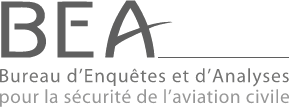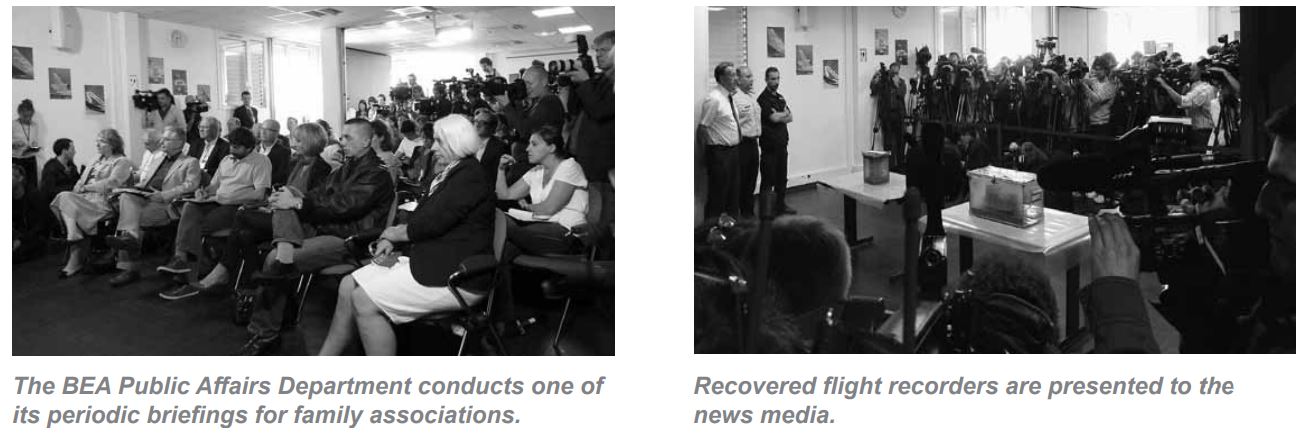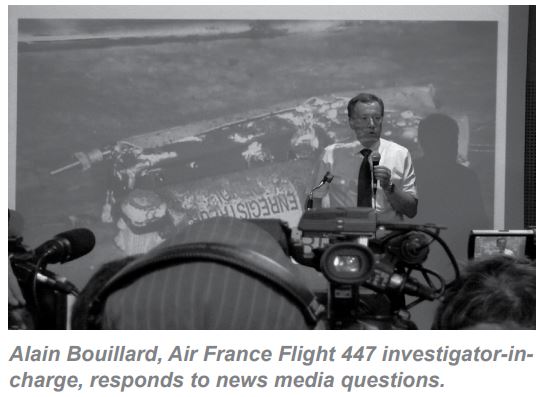

The BEA made it a priority to provide information to the victims’ families. Thirty-two different nationalities were counted among the 228 victims, and 12 of these countries requested the status of observer state.
The Bureau d’Enquêtes et d’Analyses pour la sécurité de l’aviation civile (BEA) made it a priority to provide information to the victims’ families. The bureau sometimes encountered challenges in establishing swift and direct communication due to a particular set of circumstances, reflecting the very nature of the accident. Thirty-two different nationalities were counted among the 228 victims, and 12 of these countries requested the status of observer state.
The four main countries affected by the tragedy – Brazil, France, Germany, and Italy witnessed the creation of large associations of victims’ families, thus requiring the implementation of broad communication procedures in foreign languages. France lost 73 nationals, Brazil 58, Germany 26, and Italy 9.
In accordance with the provisions of Annex 13 and European regulations, any information to be published (reports or findings) must first be released to the victims’ families. Therefore, the time difference between Europe and South America required setting a specific time (approximately 1 p.m. GMT) to hold press briefings, after the families were made aware of the latest findings.
The 23-month gap between the accident and locating the wreckage and the flight recorders, combined with leaks, online rumors, and news media speculations, led some family members to become disenfranchised with the BEA—and in some instances accused it of a lack of transparency. The BEA thus worked to restore confidence in the bureau. Another aspect of the communication strategy was to put an emphasis on the objective nature of the safety investigation to prevent any party from using findings or quotes in the legal framework.
Communication with the victims’ families
The communication strategy developed by the BEA was straightforward. It was designed to ensure that the victims’ families would be informed of any finding over the course of the undersea search operations and the publication of the three interim reports and the final report. This was performed both electronically, with more than 50 e-mails sent directly to the families prior to press releases, and physically with periodic meetings with representatives of the families.
In addition, resources were dedicated to making validated documents available in French, English, German, and Portuguese. This was paramount to ensuring the families’ understanding of the safety investigation at an extremely difficult time.
Leaks, misinformation, and the news media
The duration of the investigation, combined with partial leaks and resulting speculation, created a news media buzz that at times hindered the BEA’s work with the victims’ families. Three events should be highlighted that, far from having any scientific basis, simply contributed to perpetuating a sort of “blame game.”
1) On May 16, 2011, Le Figaro cleared the aircraft of any manufacturing defect. Later it pointed the finger at the pilots by including partly erroneous quotes from the crew.
2) On Aug. 2, 2011, a few days after the publication of the third interim report, the confidential draft of this document was leaked to the press, further fueling an already existing controversy over a proposed safety recommendation that did not appear in the official version.
3) Lastly, Jean-Pierre Otelli released a book entitled Erreurs de Pilotage (Piloting Errors) on Oct. 14, 2011, in which he attempted to reenact the chain of events that took place based on a CVR transcript he had previously and unlawfully obtained.

Another factor, online rumors and speculation, proved counterproductive to carrying out an efficient communications strategy by dedicating resources to crisis communication. Social networks and forums contributed to rapidly spreading false information – thus reflecting Marshall McLuhan’s global village concept, and from which the international press based a great deal of its headlines to further the debate over who was to blame for the accident.
This phenomenon seemed to arise from the dynamic of prioritizing the creation of information over its accuracy. This, in turn, left the victims’ families confused, in distress, and sometimes suspicious of the work of the BEA.
Information and innovations
To improve the release of information, the BEA implemented new online and multimedia capabilities. A technical team was assigned to record life aboard ships in the course of the five different undersea search operations, as well as to conduct multiple interviews with investigators to further public understanding of the nature of their work. Following the discovery of the wreckage and later of the flight recorders, photos were sent electronically from the vessels and posted overnight on the BEA’s website. Another initiative was to stream online both the presentation of the third interim report and that of the final report.
Although this was initially intended to be accessible only to the families, the procedure was extended to include BEA’s international partners and counterparts, with the hiring of two English speaking interpreters.
Lastly, such an online presence required the BEA to increase its website capabilities. Each of the four reports was downloaded more than 100,000 times, with more than 75,000 downloads of the English version. Today the site contains four sections dedicated to covering three years of investigation: Chronology, Reports, Sea Search Operations, and Press Releases & Media Library.

The BEA investigated the first major aircraft accident within the new age of digital communication technologies. It had to work its overall communication strategy in a complex environment but remained dedicated to its mission and to the victims’ families with complete, accurate, and validated information.
Crisis communication and communication strategies were both used extensively to contain and enable a safe, swift, and direct release of information, which proved to be crucial to the safety investigation and to preserving its integrity.

